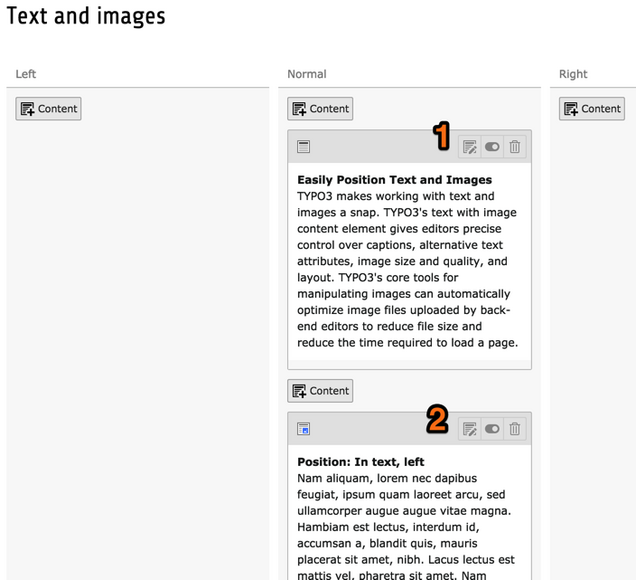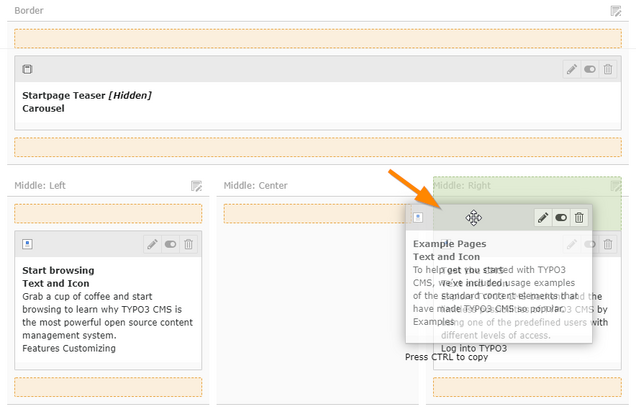
Nuts and Bolts of Content Strategy in TYPO3 CMS
Content management systems don't do your keyword research or build a content strategy template for you. But when you get down to the essentials of content modelling, the platform you choose can make all the difference.
In this article, we’ll look at how well-thought-out content strategy ensures your website meets business goals, especially when you adopt a flexible open source content management system like TYPO3 CMS that efficiently supports your planning, management, and supervision of web content.
Plan with purpose
Content marketing goals should be in direct alignment with overall marketing goals and benefit both readers and search engines. A methodical approach to content strategy helps produce engaging content that’s relevant and valuable to readers is just as important as producing content that search engines understand. Before jumping into content production, take some time to get your content strategy right and you will reap the rewards.
Streamline the strategy process. Save time. Save money. Increase ROI.
Use a content strategy template
Even looking at the web development case studies here on TYPO3.com you can see a range of projects created with the same CMS. Whether it’s self-service support portals, news publishing, booking engines, or shopping sites, web development revolves around solving the same problems. How can you produce, display, and organize content effectively? Getting an adequate content strategy template into shape is a helpful tool for you to plan your content and create your own best practices.
A content strategy template isn’t just a nice-to-have; it guides the planning for the creation, delivery, and governance of useful content. MOZ, a search optimization service, offers a well-loved content strategy template that is 17 pages long.
Effective digital marketing is much more than just managing digital content. It’s also about the intelligent use of technology to reach and convert leads into customers. Choose a powerful and flexible tool to start planning, one that will help you manage content easily.
Map out your tasks efficiently with TYPO3
A key factor for viable business growth is adopting the right digital technologies, a content management system like TYPO3 is definitely one of them. With TYPO3 CMS, multiple content editors can login and keep a website up to date. It makes organizing and editing web content uncomplicated. Anybody can use TYPO3 easily without needing to know how to code.
TYPO3 CMS can act as a hub for outstanding content and be geared with the functionalities you need. It’s inevitable that you’ll need to customize your CMS for your strategic content needs. Let's see how to use the tools in TYPO3 to grow your audience.
Four ways TYPO3 supports your content strategy
1. TYPO3 is easy for non-technical users
TYPO3 CMS makes website management less technical and more user-friendly. The essential functions of writing and publishing content, or of adding images and videos are easy to handle.
TYPO3 comes with a WYSIWYG editor. Once developers have set up your site, anyone who can use word processing software will have no problem using the system to create and publish web pages, blog posts, news articles, and so on. Check out the TYPO3 Tutorial for Editors to find out how to create your content step-by-step. In this screenshot below you can see how you can have multiple content blocks, and easily position text and images.


2. The TYPO3 page tree is intuitive and flexible.
Content organization can evolve as a project progresses. With the TYPO3 backend page tree you can group pages or plot elements in a hierarchical fashion and see the structure at a glance. You can shuffle the pages and folders around, make subpages, and just toss around notions and concepts to help get thoughts organized, define priorities and model the structure to best meets your requirements. Later, deactivate pages that you want to hide from display.
With content organized in a tree structure, rather than a flat outline, you can “zoom into” as many levels as you want, and expand the structure by adding more levels.
Outlining and organizing projects as a tree structure is powerful and convenient.
3. Use content elements to manage content with TYPO3
Content management isn’t always about publishing, it’s also be about being able to move, remove or change content when necessary. Content elements are one of the key components of TYPO3’s flexibility. You can create as many as you need on every page and arrange them as you like. They’re a bit like index cards that you can shuffle around by drag and drop, organize, reorganize and even size in different ways.
Start with one content element at the top of a page and write a synopsis that gets displayed on the parent page. That synopsis contains all the topics that you want to write more about. You then create more content elements for the different topics and just fill in the basics and leave the writing to further along the line.
Content elements are a great enablement tool as they let you write chunks of content and give you the liberty of moving things around later on. Move content elements to entirely different pages, copy them, reuse them elsewhere, and delete them. Because, yes, you’ll want to delete a Christmas special offer when the New Year comes round. With TYPO3 CMS, you can do this and lots more, without the help of a developer.

4. Search Engine Optimization (SEO) at your fingertips
SEO clearly communicates to site visitors and search engines what your website is about, what’s on offer, and what is important to know. TYPO3 lets you optimize SEO for search engines as you create individual pages with features like URL structure, page titles, and headers. It also allows you to quickly add your own meta description and meta tags.
Search engines are key to getting you into the game, SEO improves your visibility search engine results.
TYPO3 can do all this and more. Use meaningful headers every couple of paragraphs to guide your visitors through your texts; they also add to readability. When you create new content elements, add headers using the keywords you want to rank for. There should be no more than 6-7 headers per page and 2-3 paragraphs per topic. Later you can spend time filling in the details, including the metadata and the chunks of content.
Summing it up
TYPO3 is geared with a rich set of tools to plan and create your content. Multiple editors can login and keep your website up to date. The page tree and content elements make the ongoing task of organizing and editing web content uncomplicated. And SEO is a cakewalk. Implement your content strategy with TYPO3 CMS. Using such a flexible and powerful enablement tool helps you to reach your goals and grow your audience.
Finding the right TYPO3 partner
Whether you are launching your first TYPO3 website, updating an existing website or relaunching an older website, TYPO3 GmbH can assist you in finding a trusted development partner for your TYPO3 web project that covers all of the aspects that are relevant to you. Get in touch if you have any questions!